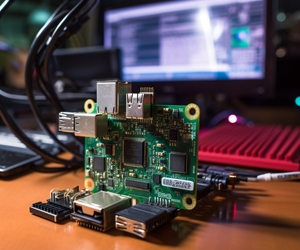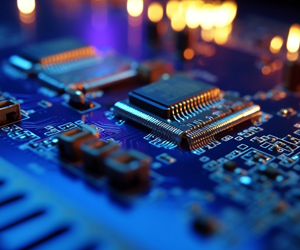The Burlington Tower, Business Bay- Dubai(U.A.E)
info@apextechnolgy.com
The Burlington Tower, Business Bay- Dubai(U.A.E)
info@apextechnolgy.com
Computer systems and communication equipment are integral components of modern technology infrastructure. Here are some key points regarding these areas:
Computer Systems:
Hardware Components
Computer systems consist of hardware components such as processors (CPU), memory (RAM), storage (hard drives or SSDs), motherboards, graphics cards, and peripherals like monitors, keyboards, and mice.
Operating Systems
Operating systems (OS) like Windows, macOS, Linux, and Unix manage computer hardware and software resources, providing a user interface and enabling applications to run.
Types of Computers
Computers vary in size and purpose, including desktop computers, laptops, servers, mainframes, supercomputers, embedded systems, and IoT devices.
Performance & Specifications
Computer performance is measured by factors like CPU speed, RAM capacity, storage size and type (HDD or SSD), graphics capabilities, and network connectivity.
Software & Applications
Software applications run on computer systems, including productivity tools (Microsoft Office, Google Workspace), design software (Adobe Creative Suite), operating system utilities, games, and custom business applications.
Networking & Connectivity
Computers connect to networks (LAN, WAN, Internet) using wired (Ethernet, fiber optic) or wireless (Wi-Fi, Bluetooth, cellular) technologies, enabling data exchange and communication.
Communication Equipment:
Networking Devices
Communication equipment includes networking devices such as routers, switches, modems, access points, gateways, firewalls, and network cables.
Internet Protocols
Communication protocols like TCP/IP govern data transmission and networking standards, ensuring devices can communicate and exchange information across networks.
Wireless Technologies
Wireless communication equipment includes Wi-Fi routers, cellular networks (3G, 4G, 5G), Bluetooth devices, RFID tags, and satellite communication systems.
Voice & Video Communication
Communication equipment supports voice communication (phones, VoIP systems) and video conferencing tools (webcams, video codecs, conferencing software) for real-time collaboration.
Data Security
Communication equipment incorporates security measures such as encryption, VPNs (Virtual Private Networks), firewalls, intrusion detection systems (IDS), and secure authentication methods to protect data during transmission.
Cloud Services
Communication equipment interfaces with cloud services and platforms, enabling data storage, backup, synchronization, and access from anywhere with an internet connection.
Unified Communications
Unified communications (UC) systems integrate various communication tools like voice, video, messaging, email, and collaboration platforms into a unified interface for seamless communication and collaboration.
Internet of Things (IoT)
IoT communication equipment connects devices, sensors, and smart objects to networks, facilitating data collection, automation, and remote control in smart homes, industries, healthcare, and transportation.
In summary, computer systems encompass hardware, software, and operating systems that enable computing tasks, while communication equipment includes devices and technologies for networking, data transmission, and collaborative communication across various platforms and devices.



